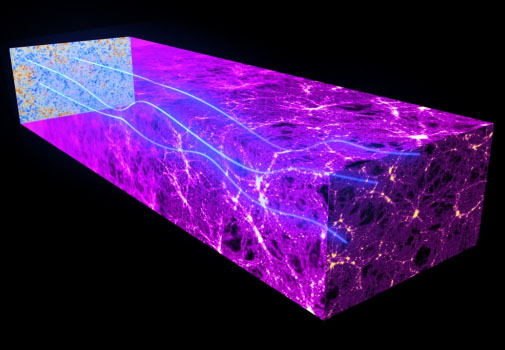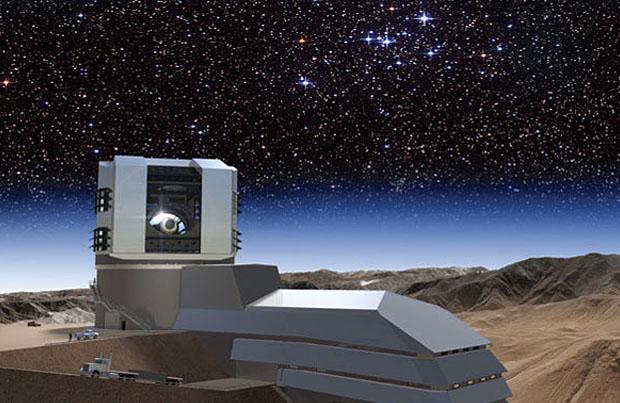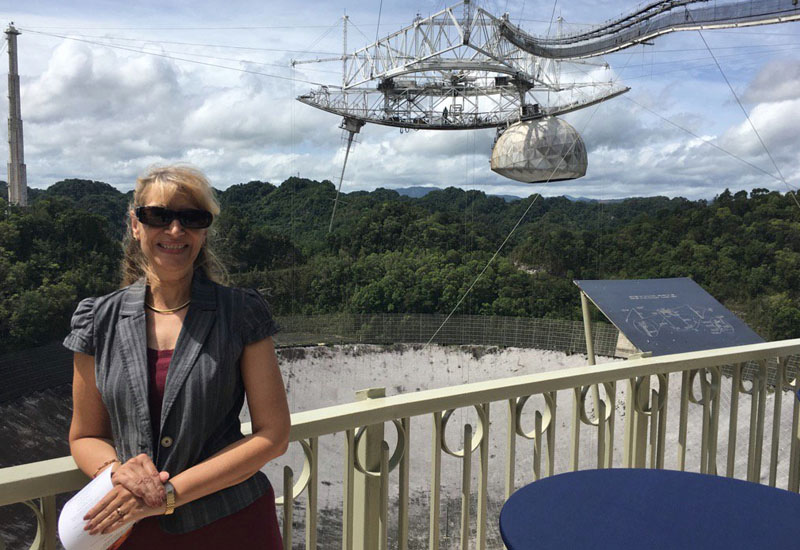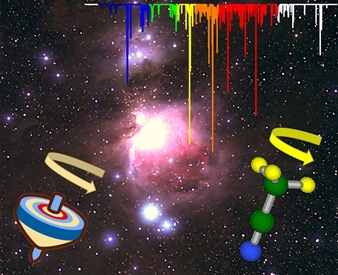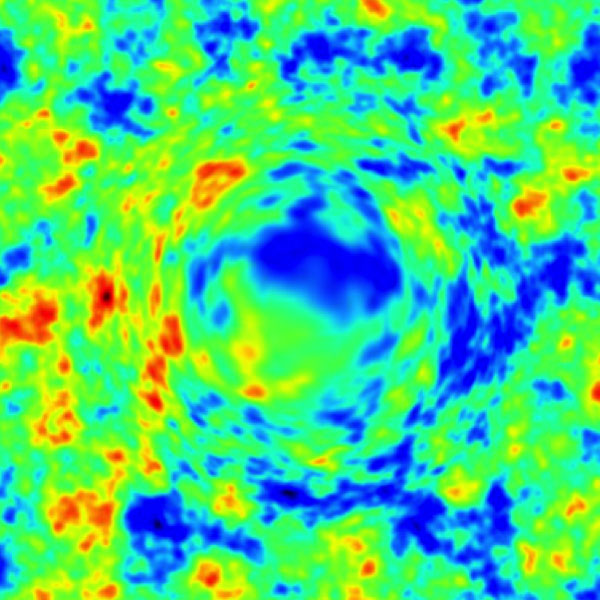 |
 |
 |
 |
 |
 |
 |
 |
 |
 |
 |
 |
|
Talks & Events
|
Special Seminars: 2016
Probing Gravity: Galaxies, CMB Lensing, and Intensity Mapping We discuss recent work exploring the use of large-scale structure to probe gravity. We first consider using CMB lensing and galaxy surveys to probe E_G, the ratio between curvature and velocity perturbations. This quantity is independent of galaxy clustering bias and is distinct for various gravity models, breaking the degeneracy in current cosmological probes of gravity and dark energy. We present our constraints to E_G using CMB data from Planck and galaxy data from the SDSS BOSS survey, which are in tension with general relativity (GR). We also forecast gravity constraints for upcoming galaxy and CMB surveys. Finally, we consider intensity mapping (IM) as a gravity probe. Specifically, we discuss our recent work probing intensities of star formation lines, i.e. CO, Ly-a, at high redshifts, and how IM lines can be used to measure E_G. Image credit: ESA Systematic Serendipity: Novel Discoveries in Astronomical Surveys CANCELLED As of last year, the Large Synoptic Survey Telescope (LSST) has begun construction on the summit of Cerro Pachon. As the top-rated flagship for ground-based astronomy in the next decade, LSST will provide an unprecedented dataset of 37 billion objects observed in both space and time. The time domain aspect of LSST is an especially promising source of new discoveries: the main survey is expected to generate new samples of thousands of supernovae, cataclysmic variables, stellar flares, and regular variables, amongst other denizens of the time-domain zoo, each one of which will generate an "alert" within 60 seconds of observation. Sorting amongst these transient and variable objects poses a challenging task: transient events of interest must be identified and prioritized, so that valuable follow-up resources (which are easily saturated by the volume of LSST alerts per night) are deployed on the events with the most potential to provide transformative understanding of particular phenomena. For LSST, this task is of course at a beyond-human scale, requiring sophisticated machine learning algorithms to provide real-time characterization and prioritization. However, another challenge looms under the surface of the approaching flood of data: how can truly novel phenomena be recognized and discovered in large datasets? In this talk, I will discuss methods and applications of finding anomalous data in astronomical datasets. Anomaly identification is a powerful means to both discover novel phenomena, as well as to identify problematic data so that it may be cleaned from the database. Lastly, hunting down anomalies is an exciting way to engage citizen scientists in astronomical discovery, whose efforts have repeatedly demonstrated the power of the crowd in uncovering previously-unnoticed phenomena. Some Like it Hot: What Observations can tell us about Coronal Heating Using data from Hinode-XRT, Hinode-EIS, and SDO-AIA, we have found that our observations support the nanoflare storm model of coronal heating. In project 1, the target loop is overdense and cooling. The cross-field temperature is multithermal as the loop cools but is isothermal before it fades from view. If these multi-stranded, multithermal, cooling loops are widespread, they could resolve the original isothermal/multithermal coronal loop controversy. In project 2, we found the best DEM for a sample of XRT and EIS loops as well as loops from the literature. We found a strong correlation between the DEM width and the DEM-weighted temperature, where the hotter the loop, the broader the DEM required to model the data. In project 3, we investigated active region cores that were observed with XRT and AIA. We found the best DEM for the areas where the Be_thick signal was significant, then artificially truncated the hot plasma of the DEM model at 5 MK. About half of our regions required the hot plasma for a good DEM fit, indicating that the hot plasma is present, even if the precise DEM distribution cannot be determined with the data available. We conclude that reconnection was heating the hot plasma component of these active regions. In project 4, we characterized the cross-field temperature distribution of every loop visible in the 171-A AIA image of a target active region. Results from all four projects indicate that coronal loops are multi-thermal and multi-stranded and that hot (T > 5 MK) plasma appears to be common and widespread in active regions. All our results support the nanoflare storm model and provide observational constraints that any viable coronal heating models will need to explain. Detection of CH3CN in a Diffuse Cloud by Hot Axis Effect indicating its coexistence with C60+, a carrier of Diffuse Interstellar Bands Diffuse interstellar bands (DIBs) are optical absorption lines by molecules in diffuse cloud. Initially observed more than 100 years ago, they still remain the longest standing unsolved problem in spectroscopy and astrochemistry, although five DIBs have recently been identified as due to fullerene ion C60+. Identifications of DIBs are important because they can give us information for chemical composition in space. To identify carrier molecules of DIBs we have measured DIB candidate molecules produced in the laboratory to compare their absorption spectra with astronomically observed DIB spectra. In this talk, I first present our latest results on the search for the thiophenoxy radical C6H5S by using our cavity ringdown spectrometer. I then present a new insight into diffuse clouds. Molecules in diffuse clouds are collisionally heated and radiatively cooled. Due to the spectroscopic selection rules, acetonitrile CH3CN is cooled well for the end-over-end rotation but is not cooled for rotation around its molecular axis. We made a model of this peculiar rotation as "Hot Axis Effect." Based on this model, we estimated a rotational absorption spectrum of CH3CN in the radio frequency region. By using Nobeyama 45 m radio telescope, the absorption line was detected in the diffuse cloud in front of Orion molecular cloud. Absorption lines of the fullerene have also been reported in this diffuse cloud. Thus we found that CH3CN coexists with C60+ in this diffuse cloud. Radiation hydrodynamical models of the inner rim in protoplanetary disks Many stars host planets orbiting within one astronomical unit (AU). These close planets' origins are a mystery that motivates investigating protoplanetary disks' central regions. A key factor governing the conditions near the star is the silicate sublimation front, which largely determines where the starlight is absorbed, and which is often called the inner rim. We present the first radiation hydrodynamical modeling of the sublimation front in the disks around the young intermediate-mass stars called Herbig Ae stars. The models are axisymmetric, and include starlight heating, silicate grains sublimating and condensing to equilibrium at the local, time-dependent temperature and density, and accretion stresses parametrizing the results of MHD magneto rotational turbulence models. The results show for the first time the dynamical stability of the rim. Passing the model disks into Monte Carlo radiative transfer calculations allows us to directly compare with observational constraints. The inner rim has a substantial radial extent, corresponding to several disk scale heights. A pressure maximum develops at the position of thermal ionization at temperatures about 1000 K. The pressure maximum is capable of halting solid pebbles' radial drift and concentrating them in a zone where temperatures are sufficiently high for annealing to form crystalline silicates. Special Presentation: Seeing the Universe with the X-ray Surveyor X-ray Surveyor (Lynx) is a NASA flagship mission concept that is developed in preparation for the 2020 Decadal Survey. With a large effective area and a high angular resolution, it will offer an unprecedented sensitivity in X-rays that will enable the studies of baryon cycles in galaxies, the first black holes in the universe, and feedback on all scales. I will describe the developing mission concept and how this X-ray vision will be necessary to get a complete picture of the evolution of the universe. CMB Lensing: Fundamental Physics from Maps of the Invisible Dark matter not only forms an invisible cosmic scaffolding within which galaxies form, its distribution in the universe also contains a wealth of information about neutrinos, inflation, and dark energy. Measurements of gravitational lensing in the cosmic microwave background (CMB) allow this matter distribution to be directly seen and mapped out to high redshifts. In my talk, I will discuss current and future work in this new but rapidly advancing field. In particular, I will show new measurements of CMB lensing with the ACTPol experiment and discuss the promise of future ultra-high-precision studies of the lensing signal with the CMB Stage-IV experiment. Lensing is not only a signal, however, but also a source of noise that limits how much we can learn about the early universe via B-mode polarization. In my talk, I will explain why delensing - removing the lensing effect to reveal the primordial sky - is crucial for the future of CMB science, showing recent work in this new area. |

